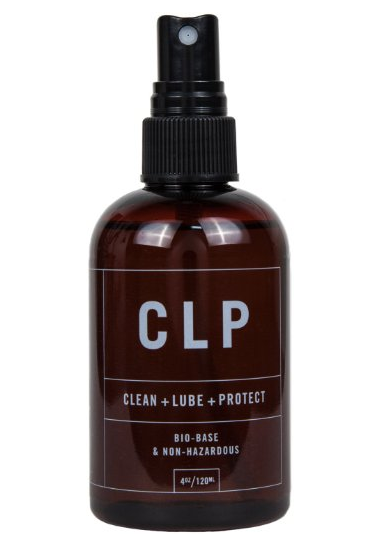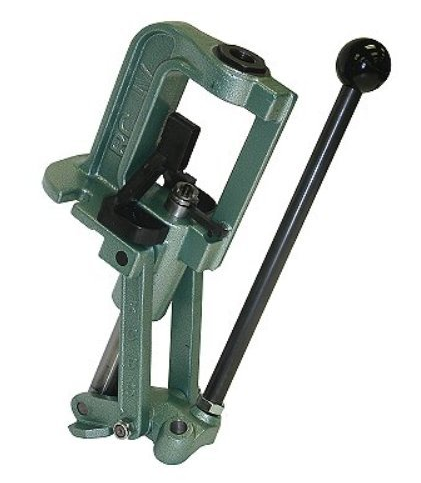 Gun oil, and gun lubricants in general, were a needed commodity with the advent of the firearm. Since these newest weapons were primarily made of iron, oil was needed to keep them working and firing properly. As a secondary concern, guns also needed protection from rusting, so oils and grease were liberally rubbed and/or poured over the iron surfaces as a protectant as well as a lubricant.
Gun oil, and gun lubricants in general, were a needed commodity with the advent of the firearm. Since these newest weapons were primarily made of iron, oil was needed to keep them working and firing properly. As a secondary concern, guns also needed protection from rusting, so oils and grease were liberally rubbed and/or poured over the iron surfaces as a protectant as well as a lubricant.
Top Rated Gun Oils
CLP by Sage and Braker
This is a military grade gun oil, and as the initials stand for Clean, Lube, Protect, it does all 3 in an exceptional way.
It is made to first clean a firearm by removing carbon deposits, copper and lead particles. It lubricates the bore and firing mechanism and stays put for long lasting lubrication, it is biodegradable so it never pollutes the environment, and it is made to resist sand and dust to keep your firearm shooting in even the harshest conditions.
This is the most expensive gun oil available, but it is one of the finest performers.
Pro Shot Zero Friction Oiler
If you like needle oilers, and want to get the oil exactly where it needs to go, the Pro Shot Needle Oiler is just the ticket. This smaller 1 ounce bottle is easy to hold and easy to squeeze, letting you get the oil into the most intricate moving parts on your firearm. That type of precision is unmatched, it features superior anti-wear formula and it won’t lose its lubricating properties even in low temperature settings.
Ballistol Lubricant Cleaner Protectant
If convenience is first on your priorities list, Ballistol Spray Lubricant must be considered. Just spray over all the metal components, into the bore and the firing mechanism, wipe away the excess, and you are done. It is slightly alkaline so that it counteracts body oils and sweat, it is biodegradable, and it is the easiest to use of all the lubricants here. Requested by the German Military to keep their firearms clean and lubricated, if it works for them, it will work for you.
Royal Purple Synthetic Gun Oil
If the “new age” in gun oils is what you are after, Royal Purple will give you a gun oil like no other. This is technically the slipperiest gun oil available, and because it is a synthetic, it is not bothered by cold, wet, dust or other harsh conditions.
Royal Purple is known for their championship winning synthetic motorcycle and car oil, and they have taken that technology and applied it to a superior gun oil. It comes in a spray can, so it is easy to apply, it is an excellent oil when putting your firearms into storage, and it will even resist salt water contamination. For synthetic protection like no other petroleum based oil can give, Royal Purple is the one.
Hoppe’s Elite Gun Oil
If you know gun oil, than you know Hoppe’s. This is considered the “old reliable” gun oil that has been used for decades, and it works as good now as it did way back when. It fully repels dirt, carbon and copper particles, and has the recommendations of both military and law enforcement agencies. It’s popular because it works, and you can’t ask better of a gun oil than that.
Lucas Oil Gun Oil
If you are interested in the new kid on the block, check out Lucas Oil Gun Oil. This oil was actually formulated for the high firing rate of machines guns, so it is made to stay in place round after round after round. It is incredibly heat tolerant, and it also does well in the cold too. This is one of the best storage oils available, with the oil sticking almost like glue, while not allowing moisture penetration with superior corrosion resistance.
Rem Oil Wipes
Rem Oil Wipes are perfect for wiping down your firearm while giving it long lasting corrosion protection. This is the same basic 1913 formula of Remington Gun Oil, with Teflon added for an even slipperier version. You can keep these wipes handy and use them after every time you’ve been in the field. The oil will stay fluid even at 20 degrees below zero, and the wipes mean you’ll never have to bother with a rag again. A classic, to be sure, but still going strong after all of these years.
Wolf All In One Gun Oil
Although no one will argue about its lubricating qualities, where Wolf Oil stands apart is in its cleaning capabilities. Law Enforcement endorsed, this synthetic gun oil will get your gun squeaky clean. It will keep your gun firing in the dust and dirt, while repelling moisture with the best of them. It is also good for cold weather shooting and the formula is made to keep your barrel cooler when firing multiple rounds in rapid succession.
Of course, because there are so many brands of gun oil available, all of them could not possibly be included here. That just would not be very practical. But this list is representative of the most popular oils available, and given this information as a whole, you should be able to decide what is right for you and your gun.
History of Gun Oil
In the age of the original smooth bore muzzle loaders, pork fat and beef tallow were adequate ways to keep the firing mechanism well lubricated, while also being rubbed on the barrel to keep it from rusting. In fact for rust protection, pork fat was preferred because it was stickier and tended to stay on the barrel longer. Nothing changed much for hundreds of years.
The Civil War
The American Civil War was revolutionary not only for generalship and tactics, but also for the type of gun oil used. Although pork fat remained the “go to” rust preventative on the long barreled rifles, the firing mechanisms had become more complex. Regular animal fats became too time consuming and difficult to get into all of the little bits and pieces where lubricant was needed most, so a substitute was found in olive oil. Known as “sweet oil” by the troops, olive oil became as much in demand as food and water. Without it, the mini-ball muzzle loaders would soon lock up, foul or jam, and when you depended on a weapon which stood before life or death, it needed to function. Olive oil kept both the North and the South’s weapons lubricated throughout the entire war.
The Wild West
As technology advanced after the Civil War, handguns began to appear in ever increasing numbers. These technological marvels for their day, relied on modern cartridges with the primer built in. There were far more moving parts in a revolver than there were in a muzzle loader, and olive oil could not stand up to constant firing. A new oil was needed, and it was found that sperm oil, harvested from the spermaceti organ on the head of a sperm whale, was the answer. The oil was originally used for oiling sewing machines, but proved equally effective as a gun oil.
Sperm whale oil is more of a wax than an oil, so it stuck to the parts that needed lubrication and performed well even in deserts and dusty environments. In all of those old west shootouts, from Wyatt Earp at the O.K. Corral to Billy the Kid and the Lincoln County Regulators, their guns kept firing because of sperm oil.
Petroleum Gun Oil
By the late 1800’s, as the oil wells began to pump crude from the ground, refineries discovered that they could make oil as thick or as thin as desired, for virtually any application. It was at this junction in time that petroleum-based lubricants became commonplace. They were cheaper to produce, easier to use and highly effective. Petroleum-based lubricants took over the lubrication industry, essentially making all other lubricants obsolete. Whether it for protecting the bluing on a gun barrel or keeping the firing mechanism working smoothly with each pull of the trigger, there is a petroleum-based gun oil that will work for that purpose.
Synthetics
The newest of the new, synthetic gun oils are beginning to make their presence felt. They are generally stickier, which means they offer better storage protection, and when shooting, they lubricate for a longer period of time before needing to be reapplied. And because they are synthetics, they can be manufactured to have superior temperature performance, both hot and cold, and they are also slipperier, meaning that you gun will have less wear and tear during use. Traditionalists may scoff at them, but truly, no petroleum based oil is better than a synthetic.


